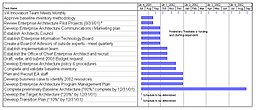At the end of 2016, Ian S. accepted a contract position at a large medical conglomerate. He was joining a team of 6 developers on a project to automate what was normally a 10,000-hour manual process of cross-checking spreadsheets and data files. The end result would be a Django server offering a RESTful API and MySQL backend.
"You probably won't be doing anything much for the first week, maybe even the first month," Ian's interviewer informed him.
Ian ignored the red flag and accepted the offer. He needed the experience, and the job seemed reasonable enough. Besides, there were only 2 layers of management to deal with: his boss Daniel, who led the team, and his boss' boss Jim.
The office was in an lavish downtown location. The first thing Ian learned was that nobody had assigned desks. Each day, everyone had to clean out their desks and return their computers and peripherals to lockers. Because team members needed to work closely together, everyone claimed the same desk every day anyway. This policy only resulted in frustration and lost time.
As if that weren't bad enough, the computers were also heavily locked down. Ian had to go through the company's own "app store" to install anything. This was followed by an approval process that could take a few days based on how often Jim went through his pending approvals. The one exception was VMWare Workstation. Because this app cost money, it involved a 2-week approval process. In the middle of December, everyone was off on holiday, making it impossible for Ian's team to get approvals or talk to anyone helpful. Thus Ian's only contributions that month were a couple of Visio diagrams and a Django "hello world" that Daniel had requested. (It wasn't as if Daniel could check his work, though. He didn't know anything about Python, Django, REST, MySQL, MVC, or any other technology relevant to the project.)
The company provided Ian a copy of Agile for Dummies, which seemed ironic in retrospect, as the team was forced to the spend entire first week of January breaking the next 6 months into 2-week sprints. They weren't allowed to leave sprints empty, and had to allocate 36-40 hours each week. They could only make stories for features, so no time was penciled in for bug fixes or paying off technical debt. These stories were then chopped into meaningless pieces ("Part 1", "Part 2", etc.) so they'd fit into their arbitrary timelines.
"This is why medical insurance is so expensive", Daniel remarked at one point, either trying to lighten the mood or stave off his pending insanity.
Later in January, Ian arrived one morning to find the rest of his team standing around confused. Their project was now dead at the hands of a VP who'd had it in for Jim. The company had a tenure process, so the VP couldn't just fire Jim, but he could make his life miserable. He reassigned all of Jim's teams that he didn't outright terminate, exiled Jim to New Jersey, and gave him nothing to do but approve timesheets. Meanwhile, Daniel was told not to bother coming in again.
"Don't worry," the powers-that-be said. "We don't usually terminate people here."
Ian's gapingly empty schedule was filled with a completely different task: "shadowing" someone in another state by screen-sharing and watching them work. The main problem with this arrangement was that Ian's disciple was a systems analyst, not a programmer.
Come February, Ian's new team was also terminated.
"We don't have a culture of layoffs," the powers-that-be assured him.
They were still intent on shoving Ian into a systems analyst position despite his requisite lack of experience. It was at that point that he gave up and moved on. He later heard that within a few months, the entire division had been fired.


